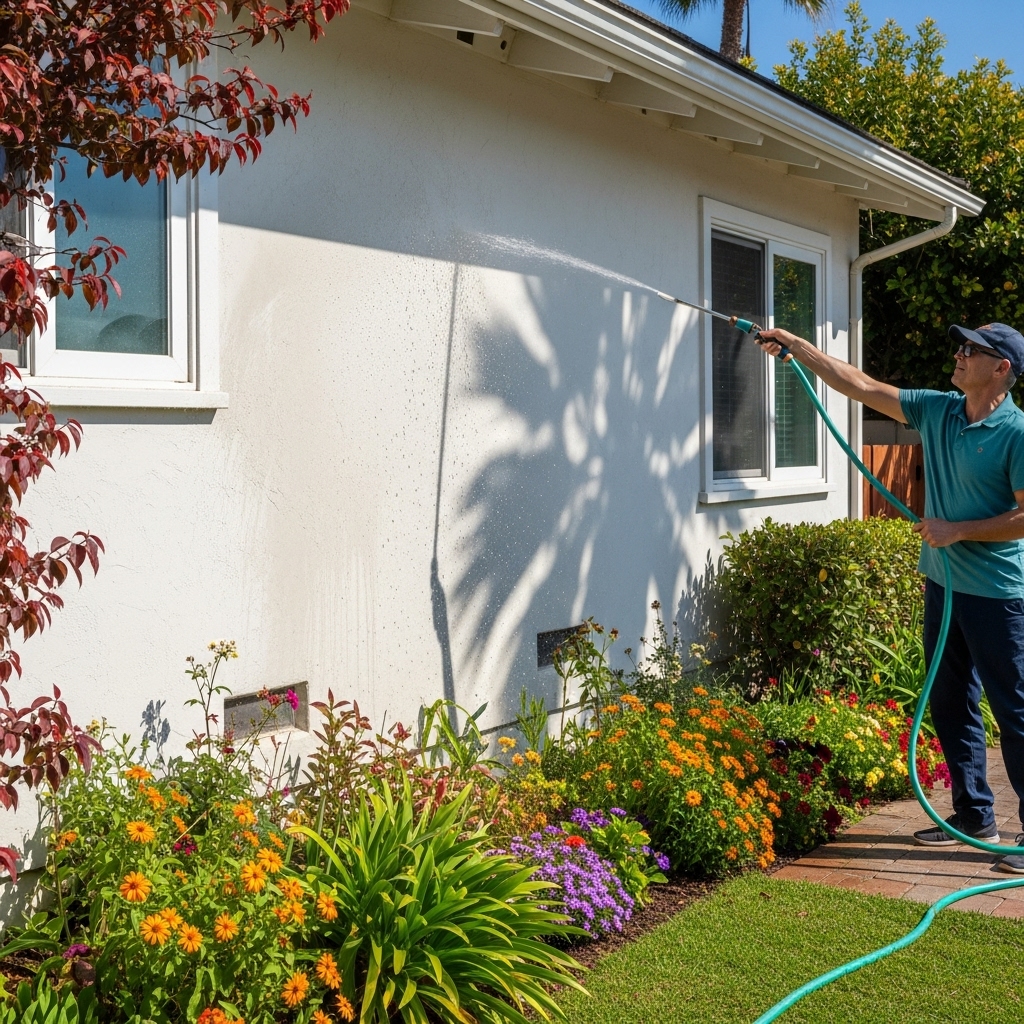Coastal Care for Long-Lasting Homes
Life by the ocean is a gift, but salt air, sun, and seasonal winds create unique wear-and-tear on homes. With a proactive maintenance plan, you can protect finishes, extend system life, and keep your spaces looking sharp year-round. The following guidance reflects common challenges in Huntington Beach and the strategies experienced teams use to prevent small issues from becoming big repairs. If you are planning upgrades or want help building a maintenance roadmap, consider consulting a local general contractor who understands coastal materials and assemblies.
Maintenance is not just about fixing what is broken; it is about stewarding your home so it performs beautifully for the long run. Regular checks, simple cleaning routines, and attention to ventilation will keep interiors comfortable and exteriors resilient, even as ocean breezes carry salt and sand throughout the year.
Exterior Surfaces: Salt, Sun, and Moisture
Exterior finishes take the brunt of coastal exposure. Paint and coatings should be chosen for UV resistance and salt tolerance. Periodic rinsing with fresh water helps remove salt crystals that attract moisture and speed corrosion. Pay special attention to windward sides of the house and areas that collect spray or mist; a quick rinse can add years to a coating’s service life.
Check for hairline cracks in stucco, gaps at trim joints, and caulk that has lost elasticity. Seal small openings before the wet season to prevent moisture intrusion. For wood elements, look for peeling finishes and soft spots that can indicate hidden rot. When refinishing, surface preparation is critical—clean, sand, and prime with products rated for marine-influenced environments.
Metalwork and Hardware
Metal railings, fasteners, and exterior hardware are vulnerable to corrosion near the ocean. Choose stainless steel or appropriately coated metals, and inspect them regularly. If you spot early signs of rust, address them immediately by cleaning and applying a protective coating. Lubricate hinges and locks with products designed to repel moisture to keep them moving smoothly despite salt exposure.
Deck connectors, joist hangers, and ledger attachments deserve special attention. Even hidden metal components can corrode over time. Periodic inspection and photo documentation help you track condition and plan timely maintenance.
Roofing and Rainwater Management
Salt-laden mist and sun can age roofing materials faster along the coast. Schedule regular roof inspections to spot cracked tiles, loose shingles, or degraded flashing. Clean gutters and downspouts to ensure water flows away from the structure, and verify that drains are clear before the rainy season. Overflowing gutters can send water into facades, causing staining and moisture damage.
Inspect penetrations—vents, skylights, and satellite mounts—for secure flashing. If you replace roof materials, consider systems known to perform well in marine settings and ask about underlayment options that support long-term moisture control.
Windows, Doors, and Weatherstripping
Windows and doors are both functional and aesthetic elements, and they are frontline defenders against moisture and wind. Clean tracks and weep holes so water sheds properly during storms. Check weatherstripping and replace it when it becomes brittle or compressed. If you feel drafts or notice condensation, evaluate ventilation and consider upgrading glazing or seals for improved performance.
Hardware on doors and windows should be corrosion-resistant. Two or three times a year, wipe hardware with a damp cloth and apply an appropriate protectant. Small efforts here preserve smooth operation and a crisp appearance.
Decks, Balconies, and Waterproofing
Deck surfaces and balcony membranes must shed water effectively. Look for ponding, soft spots, or cracks at transitions. Keep surface drains clear of debris and verify that scuppers are unobstructed. If you have tile over a waterproofing system, inspect grout and caulk lines, as small openings can allow water to track underneath and compromise the membrane.
Wood decks need consistent care: clean, sand, and reseal using products suitable for coastal exposure. Remember that hidden elements—like ledger flashing and fasteners—are critical. If you see staining on the wall below a deck, investigate immediately to prevent structural damage.
HVAC and Indoor Air Quality
Salt air can affect HVAC performance. Replace filters on schedule, and consider more frequent changes if windows are often open to capture breezes. Inspect outdoor units for corrosion on fins and connections, and keep the area free of vegetation. A gentle rinse of condenser coils (with power off and using proper precautions) can improve efficiency.
Ventilation is a powerful tool against humidity. Use bath and kitchen exhaust fans consistently, and verify that they vent to the exterior. If certain rooms feel stuffy or damp, discuss options such as improved ducting, balanced ventilation, or dehumidification strategies with your service professionals.
Plumbing and Moisture Management
Monitor for leaks, even minor ones, as they invite mold and can damage finishes. Check supply lines, shutoff valves, and under-sink connections. In bathrooms, maintain grout and caulk at tub and shower interfaces. If you see persistent mildew despite cleaning, investigate ventilation and consider whether a fan upgrade or additional duct insulation is needed.
For outdoor plumbing, protect hose bibs and exposed lines. Salt can degrade rubber washers and seals; replacing these small components as needed prevents drips and staining on exterior surfaces.
Electrical Systems and Lighting
Electrical panels should be labeled clearly, and circuits balanced to support modern loads. In coastal environments, ensure exterior fixtures have appropriate ratings and gaskets. Periodically check that GFCI and AFCI devices function correctly using their test buttons. For landscape lighting, inspect connections and conduit for corrosion or moisture intrusion, and keep lenses clean for consistent illumination.
Inside, replace lamps with energy-efficient options that handle frequent on-off cycles well, especially in high-traffic areas. Smart controls can help manage exterior and interior scenes while reducing energy waste.
Interior Finishes and Sand Management
Sand is the silent culprit of scratches and wear. Employ durable entry mats and establish routines for shaking out shoes and beach gear before entering. For floors, choose finishes that resist abrasion and are easy to clean. Microfiber mops and frequent light cleaning prevent grit from building up and damaging surfaces.
In bathrooms and kitchens, use cleaners compatible with your finishes. Harsh chemicals can shorten the life of sealants and coatings. When in doubt, consult manufacturer care guides and keep a simple, consistent cleaning schedule.
Garage and Storage Areas
Garages often collect salt, sand, and moisture. Seal concrete floors with products designed to resist staining and minor chemical exposure. Keep off-the-floor storage for items that absorb moisture, and check for rust on tools and bicycles. Dehumidifiers can help in closed garages during humid spells, and periodic door seal inspection keeps out drafts and spray.
Organized storage protects your investment. Sturdy shelving, labeled bins, and clear walkways make maintenance tasks safer and faster.
Landscaping, Drainage, and Hardscapes
Healthy landscapes manage water effectively. Verify that grading slopes away from the house and that downspout discharge does not undermine foundations or hardscapes. Salt-tolerant plantings can thrive with less fuss and reduce corrosion from overspray. If you irrigate, inspect for leaks and adjust heads so they do not wet walls or fences unnecessarily.
Paver patios and walkways should be level and well-compacted. Replenish joint sand as needed and address settling early to avoid trip hazards or drainage problems.
Termite and Pest Awareness
Coastal climates can invite pests. Keep firewood and cellulose material off the ground and away from siding. Seal small openings to deter insects and rodents. Regular inspections by qualified professionals help catch issues early, especially in areas where wood meets soil or where moisture is present.
For decks and exterior trim, consider species and treatments that resist insects, and maintain protective coatings diligently.
Seasonal Maintenance Rhythm
Establish a simple seasonal cadence. Before the rainy season, clean gutters, inspect roofs and flashing, and seal exterior penetrations. In spring, refresh exterior coatings where needed and tune up irrigation. During summer, verify ventilation and shade strategies to keep interiors comfortable. In fall, plan for any projects that require longer lead times, coordinating materials to arrive before the holidays if that timing matters to you.
Using a calendar reminder system helps you keep the rhythm going without stress. Small, steady actions are easier than emergency repairs.
Documentation and Photos
Maintain a home log with dates of inspections, service visits, and repairs. Photos of hidden conditions—behind access panels, under decks, or in attics—build a visual history that simplifies troubleshooting. When you upgrade systems, keep manuals and warranty information together so you can reference care instructions quickly.
If you ever plan a remodel, this record becomes invaluable. Contractors can plan faster and more accurately when they see how your home is assembled and maintained.
When to Call a Professional
Some tasks are perfect for weekend effort, while others merit expert hands. Waterproofing repairs, structural modifications, electrical panel work, gas connections, and roofing are best handled by licensed professionals who can ensure safety and compliance. A brief consultation can also validate your maintenance plan and prioritize upgrades that deliver the most value in a coastal setting.
If you sense persistent moisture, unusual odors, or repeated paint failure, escalate to a deeper investigation. Early intervention prevents secondary damage and protects finishes and furnishings.
Midyear Home Health Check
Twice a year, conduct a whole-home review. Walk the exterior slowly, looking for subtle signs: hairline cracks, rust blooms, loose trim, or cloudy window seals. Inside, listen for drips, buzzes, or rattles, and note any doors or windows that stick seasonally. Test safety devices and scan mechanical rooms for leaks or corrosion. This habit transforms maintenance from reactive to proactive.
As you make notes, group items by urgency. Address water-related concerns first, then safety, then performance and aesthetics. If a project grows beyond a simple fix, consult a capable general contractor to scope the work and sequence tasks efficiently.
Frequently Asked Questions
Q: How often should I rinse exterior surfaces? A: A light freshwater rinse every month or two, especially on windward sides, helps remove salt and slow corrosion. Increase frequency after storms or heavy marine layers.
Q: What exterior metals hold up best near the ocean? A: Stainless steel and appropriately coated aluminum or galvanized products perform well when maintained. Regular cleaning and protective coatings extend service life.
Q: How do I reduce interior humidity? A: Use exhaust fans consistently, keep filters clean, and ensure ducting vents outdoors. In persistently damp rooms, discuss balanced ventilation or dehumidification options with your service providers.
Q: My deck looks fine from the top. Should I still inspect it? A: Yes. Hidden elements like ledgers, fasteners, and support posts can deteriorate out of sight. Annual inspections catch issues early.
Q: Are there paint types better for coastal homes? A: Choose high-quality exterior paints and primers rated for UV and salt environments. Prep and application are just as important as product choice.
Q: What maintenance records should I keep? A: Dates, service notes, product warranties, and photos. A concise file helps with future troubleshooting and supports resale value.
Keep Your Home Ocean-Strong
With a simple plan and steady attention, your home can thrive in the coastal climate. If you would like help prioritizing upgrades, building a seasonal checklist, or tackling specialized repairs, reach out to a trusted general contractor who knows what performs best in Huntington Beach. A proactive partnership today will keep your spaces beautiful, efficient, and resilient for years to come.

